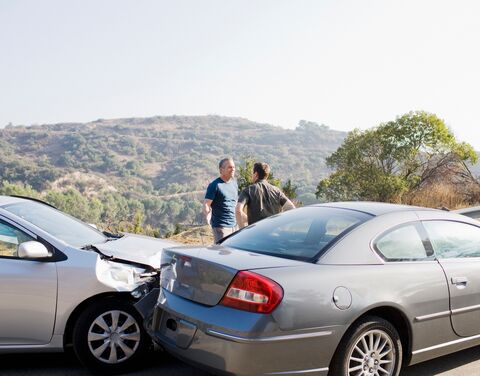
Event data recorder − digital car tracks
Since mid-2022, it has been required for new cars to have an event data recorder (EDR) − including in Switzerland. Accident researcher Stefan Liechti explains in the interview what this is all about and why the EDR is not a black box.
Stefan Liechti, what exactly is an event data recorder?
The event data recorder (EDR) is a type of black box that we know from airplanes, but with one very significant difference: While the black box of an airplane records everything, the EDR of a vehicle only records data relating to a special event. Some EDRs record data on an ongoing basis and overwrite the previous few minutes if the journey goes without issue. Other EDRs are only activated by an event – for example, an abrupt change of speed.
Is this a newer technology?
No, generally speaking we have known of this function for a long time, and in many new vehicles it has now become the standard. In the US, the first electronic data recorders were developed and used in vehicles already as far back as 1994. At that time, the data was limited to the time of the collision. In 2009, the data was then expanded to five seconds before the accident since the so-called pre-crash data is much more valuable for reconstructing the accident than only a snapshot. Ultimately in 2014, it became mandatory in the US to equip passenger cars with an event data recorder.
“In the US, the first electronic data recorders were used in vehicles already as far back as 1994.”
What about here in Switzerland?
In the EU and Switzerland, the corresponding law came into force in July 2022. At the same time, certain driver assistance systems became mandatory for new models – from 2024, these new requirements will apply for all new vehicles. However, there is no obligation to retrofit.
What does the EDR have to do with driver assistance systems?
The event data recorder uses the same sensors as driver assistance systems. For systems such as the emergency breaking system, fatigue detector, anti-lock breaking system (ABS) and electronic stability program (ESP) to even function, they need data regarding driving dynamics. The information gathered thus has a dual function: Firstly, it serves to ensure security during the journey, and secondly, it helps to clarify accidents.
Which data is saved by an event data recorder?
The recorded data may vary from manufacturer to manufacturer. However, the following information is always recorded regardless of the manufacturer:
• Speed
• Delays
• Accelerations
• Vehicle information on airbag deployment, seatbelt, gas pedal position, etc.
Does the EDR make every accident a “clear-cut case”?
No, unfortunately it's not that simple. EDR data is in no way meant to replace conventional accident reconstruction, but merely to supplement it. It must also be carefully validated. But of course, accident reconstruction has changed through technical advancements. Before there were assistance systems, the tire tracks were the main indications of how an accident took place. Today, the electronic control systems, first and foremost the anti-lock braking system (ABS), prevent these tracks. That’s why the digital tracks on the EDR have become more important.
Does the event data recorder also have disadvantages?
For responsible road users, who follow the rules, the EDR only has advantages: Accident reconstruction is made easier through the additional information – the question of fault is often easier to clarify than before. This entails greater legal security.
“For responsible road users, the event data recorder only has advantages.”
Keyword data protection: Where and how long will my data be kept for?
The data is not saved in a cloud, but rather directly in the airbag control unit. This is generally located in the middle console of the vehicle. Provided the airbag is deployed in a collision, the recording is permanently saved. It is not possible to delete this information.
How is the data of an event data recorder read?
Here, only professionals have access. To read the data, you need a specialized device – the Bosch CDR (Crash Data Retrieval) tool. This is connected with the OBD (On Board Diagnosis) interface of the vehicle and a laptop. The data is read manually and shown directly on the connected laptop.
What does AXA use this data for?
EDR data makes it possible to reconstruct an accident as accurately as possible. When clarifying the question of fault after an accident, data regarding driving dynamics are often very informative. Moreover, the EDR recording helps us to recognize speeding offenses and combat fraud.






